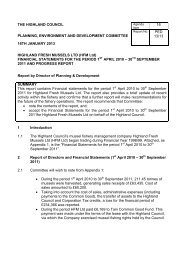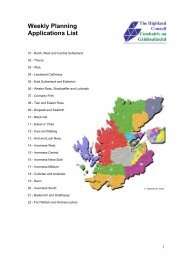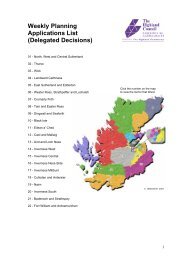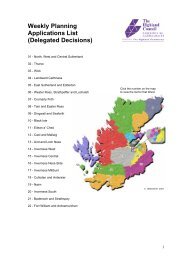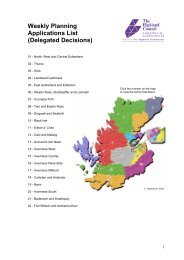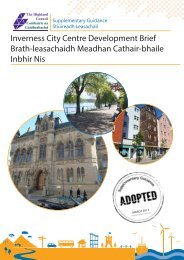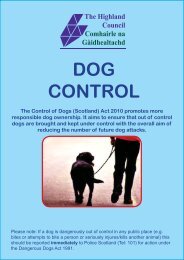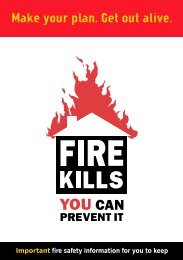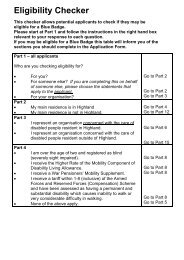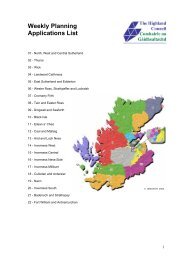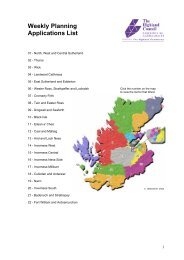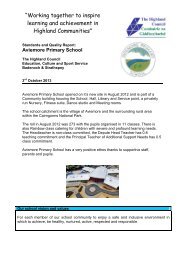A Single Strategy for Sensory Needs - The Highland Council
A Single Strategy for Sensory Needs - The Highland Council
A Single Strategy for Sensory Needs - The Highland Council
You also want an ePaper? Increase the reach of your titles
YUMPU automatically turns print PDFs into web optimized ePapers that Google loves.
Notes on Terminology<br />
<strong>The</strong> following definitions have been used by the Scottish Executive in their document ‘Sensing Progress -<br />
Social Work Services <strong>for</strong> People with a <strong>Sensory</strong> Impairment’ published in 1998.<br />
<strong>Sensory</strong> Impairment<br />
This is the broad term used to cover visual impairment, deafness, being hard of hearing and deafblindness.<br />
Although the term ‘impairment’ is in common usage, we acknowledge that many people with sensory<br />
needs, and particularly those from the British Sign Language (BSL) using community, do not see themselves<br />
as being ‘impaired’ from within a medical model. <strong>The</strong>y see themselves more as being disadvantaged by<br />
society, and operating from within a linguistic and cultural minority.<br />
Visual Impairment<br />
This is a term used to cover the spectrum of those who have some residual vision to those who have no sight<br />
at all. <strong>The</strong> terms blind and partially sighted are also frequently used in the report. Blind in the context of a<br />
person being registrable has a specific meaning, being so blind as to be unable to per<strong>for</strong>m any work <strong>for</strong> which<br />
eyesight is essential. It does not necessarily mean that the person concerned will have no vision at all.<br />
Deaf People and those who are deafened or hard of hearing<br />
<strong>The</strong> term ‘Deaf Community’ is generally used to describe those Deaf people who use BSL and who feel they<br />
share a culture with other Deaf people. <strong>The</strong>re are a larger number of people who are also profoundly deaf,<br />
many of whom will have become deaf during the course of their lives and who will acquire a variety of new<br />
communication skills. <strong>The</strong> largest group are those who are hard of hearing, many of whom acquire hearing<br />
loss as they become older.<br />
6<br />
Deafblindness<br />
Deafblindness, or dual sensory loss, refers to people with a combination of sight and hearing losses, which<br />
can cause difficulties with communication, access to in<strong>for</strong>mation and mobility.



